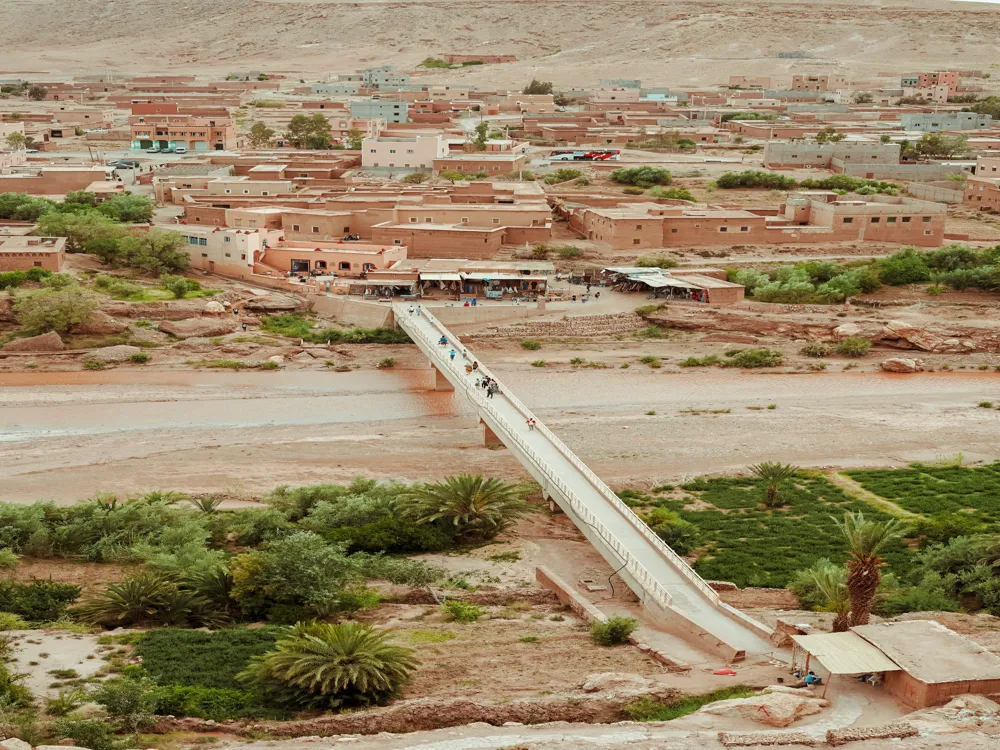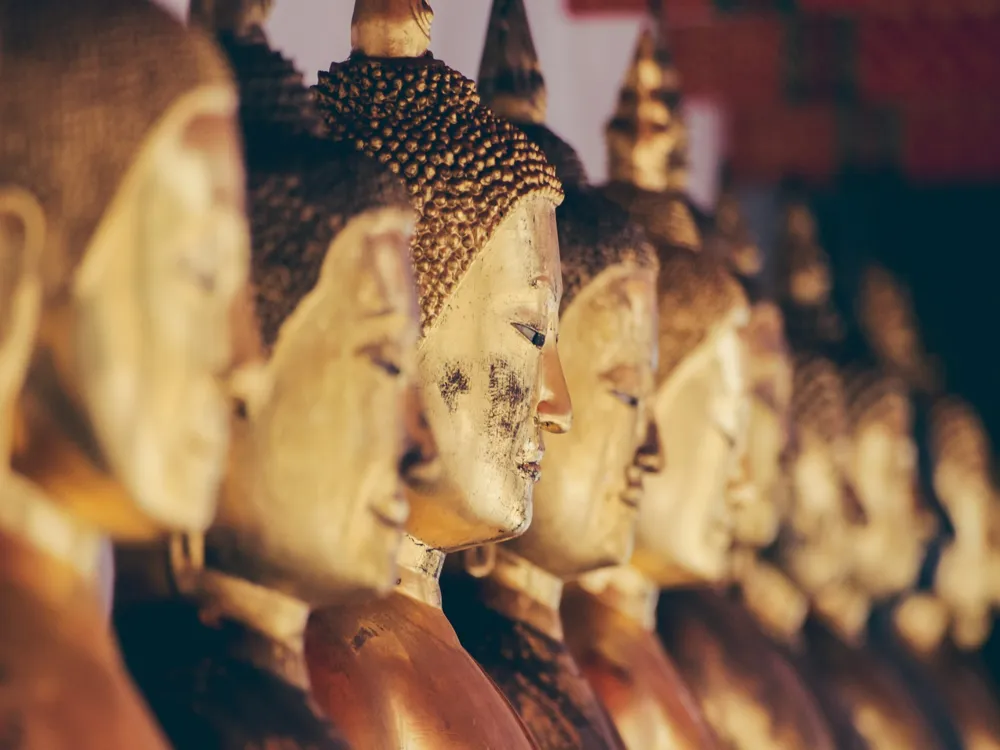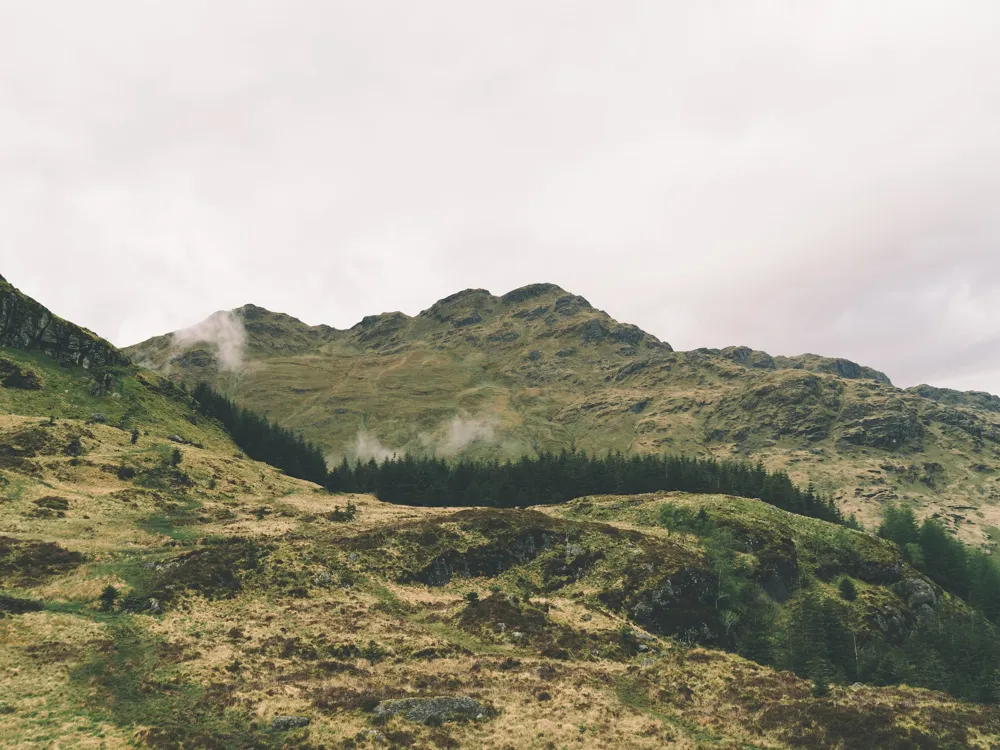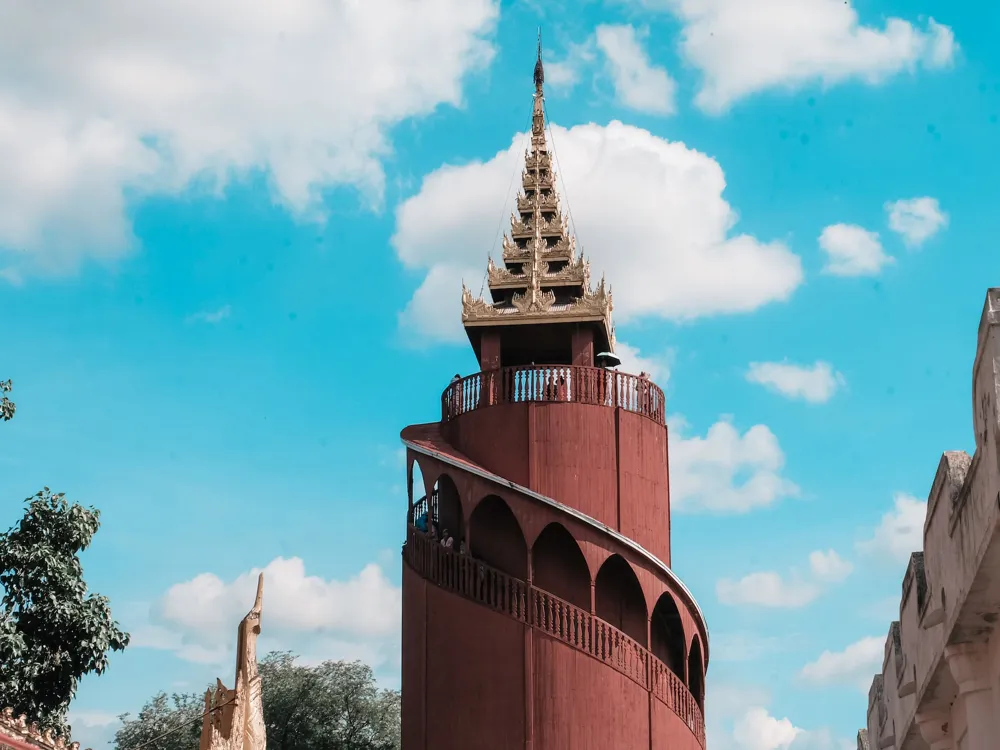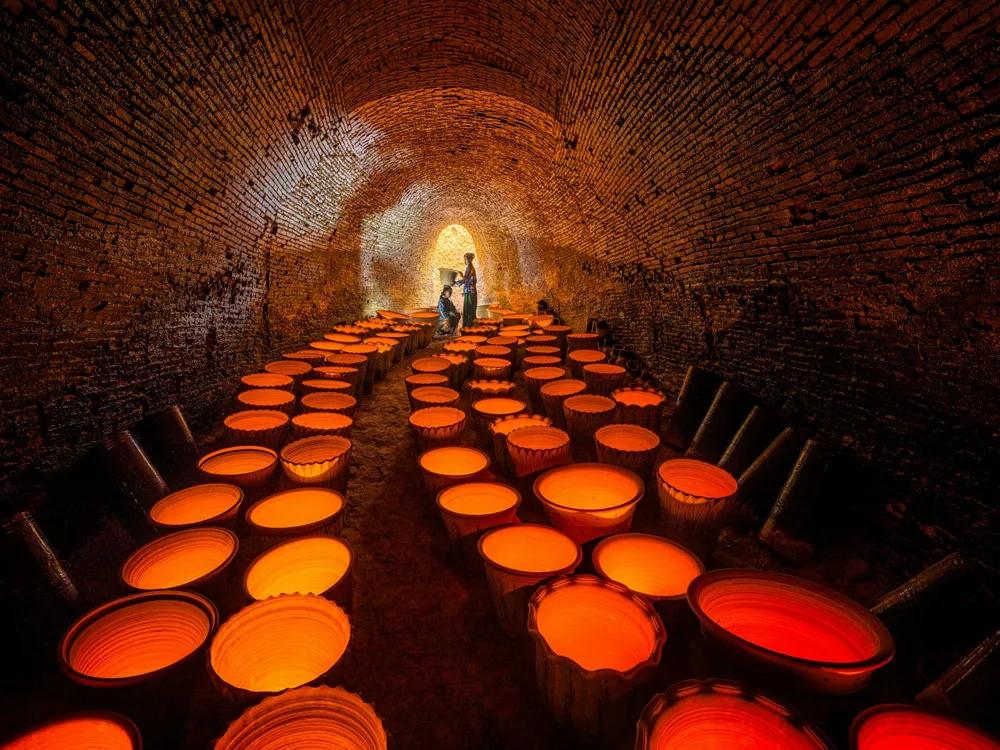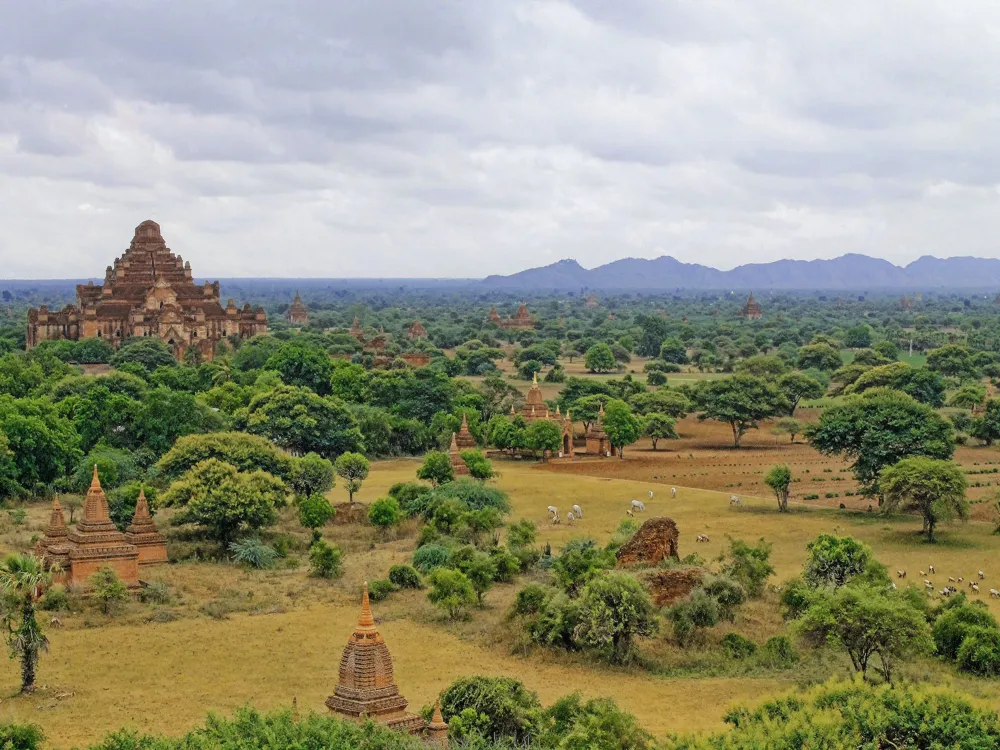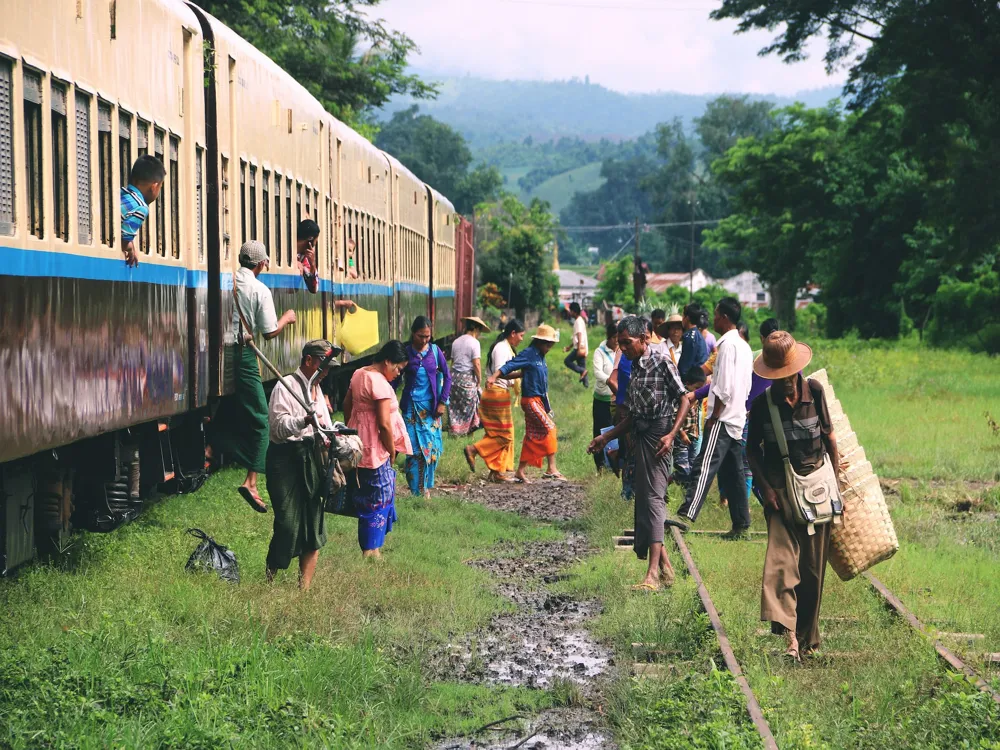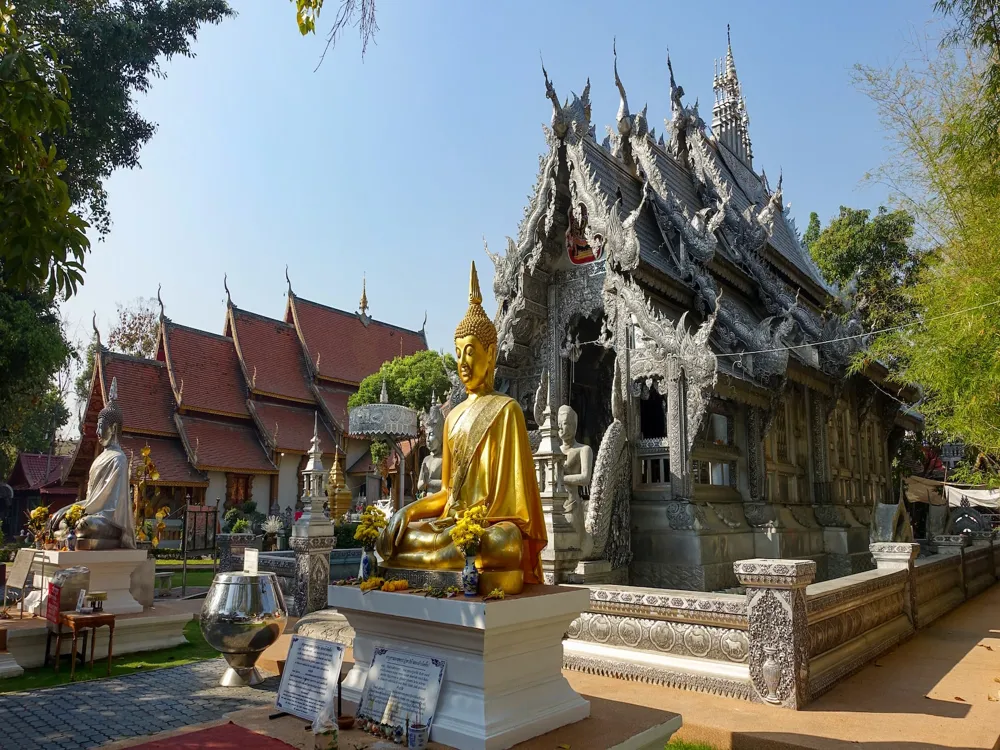Shwe Ba Taung, located near Monywa in Myanmar, offers a spectacular blend of natural and man-made wonders. This remarkable site, lesser-known to the world, presents an extraordinary array of man-made caves, temples, and stupas carved directly into the sandstone hills. Dating back several centuries, Shwe Ba Taung stands as a testament to the ingenuity and devotion of its creators. The tranquil ambiance, coupled with the rustic charm of the surrounding landscape, makes it a must-visit destination for those seeking a blend of history, culture, and natural beauty. The architectural prowess of Shwe Ba Taung is nothing short of astonishing. The site showcases a unique blend of Buddhist religious motifs and local Myanmar craftsmanship. Each cave and temple is intricately carved, with detailed facades that narrate stories of Buddhist lore and mythology. The interplay of light and shadow within these caves adds a mystical dimension to the visitor experience. One cannot help but admire the precision and skill of the artisans who created these masterpieces, often using rudimentary tools and techniques. The architecture is not only a reflection of the religious fervor of the era but also an enduring legacy of Myanmar's rich cultural heritage. Each cave and temple at Shwe Ba Taung is a world unto itself, filled with statues of Buddhas, Bodhisattvas, and various mythological figures. The alignment of these structures, along with the strategic use of natural light, creates a serene and contemplative atmosphere. Visitors often find themselves lost in the tranquility and spiritual aura of these spaces. The artistry in the statues and the frescoes, although weathered by time, continues to exude a sense of peace and devotion. These elements collectively contribute to a deeply spiritual experience that stays with visitors long after they leave. In recent years, efforts have been made to preserve and conserve the delicate structures at Shwe Ba Taung. Exposure to natural elements over the centuries has led to wear and erosion, threatening the longevity of this heritage site. Conservationists and local authorities are working together to ensure that the beauty and historical significance of Shwe Ba Taung are preserved for future generations. These efforts include structural reinforcements, controlled visitor access, and educational programs to raise awareness about the importance of preserving such unique historical sites. The architectural landscape of Shwe Ba Taung is a captivating blend of religious symbolism, artistic expression, and ingenious engineering. The site, believed to have been established between the 14th and 18th centuries, features an array of hand-carved caves, stupas, and meditation chambers. Each structure is a marvel of design, carved directly into the sandstone hills, representing a harmonious balance between human creativity and the natural environment. The construction techniques used in Shwe Ba Taung are a testament to the skill and dedication of the craftsmen of the time. The intricate carvings on the cave walls, the precise cutting of the sandstone, and the strategic placement of each structure showcase a deep understanding of both art and engineering. The use of natural light in these structures is particularly noteworthy, as it adds an ethereal quality to the interiors and highlights the detailed artwork. The design and layout of Shwe Ba Taung are rich in Buddhist symbolism and iconography. The caves are adorned with images of the Buddha, Bodhisattvas, and various deities, each telling a story or conveying a moral lesson. The use of religious motifs is not merely decorative but serves to create a sacred space that facilitates meditation and spiritual reflection. This symbolic language is a key element in understanding the cultural and religious significance of the site. Preserving the intricate architecture of Shwe Ba Taung is fraught with challenges. The sandstone material, while allowing for detailed carving, is also susceptible to erosion and weathering. The preservation efforts thus involve a delicate balance between maintaining the original integrity of the structures and ensuring their longevity. This includes managing environmental factors, controlling visitor impact, and employing modern conservation techniques that respect the site's historical context. Shwe Ba Taung is best visited during the cooler months from November to February, when the weather is pleasant and conducive for exploration. Visitors are encouraged to dress modestly and behave respectfully, as Shwe Ba Taung is a revered religious site. It's also important to follow any guidelines provided by local authorities to preserve the sanctity of the site. While the site is accessible, some areas might be challenging for visitors with mobility issues. It's advisable to wear comfortable footwear and be prepared for some light trekking. Photography is allowed, but visitors should avoid using flash inside the caves to protect the ancient artwork. Also, touching the carvings and statues is strictly prohibited. Shwe Ba Taung is located approximately an hour's drive from the city of Monywa. Visitors can reach Monywa by bus or taxi from Mandalay, which is the nearest major city. From Monywa, local taxis or tuk-tuks can be hired to reach Shwe Ba Taung. Alternatively, organized tours often include Shwe Ba Taung as part of their itinerary, providing a hassle-free option for visitors. Read More:Discover the Marvels of Shwe Ba Taung: A Hidden Gem in Monywa
Unraveling the Mysteries of Shwe Ba Taung's Architecture
Exploring the Spiritual Essence of Shwe Ba Taung
Preserving the Heritage: Shwe Ba Taung's Conservation Efforts
Architectural Wonders of Shwe Ba Taung: A Journey Through Time
The Intricacies of Carving and Construction Techniques
Symbolism and Iconography in Shwe Ba Taung's Design
Challenges in Preserving the Ancient Marvel
Visiting Shwe Ba Taung: Essential Tips for Travelers
Best Time to Visit
Respecting Local Customs and Traditions
Navigation and Accessibility
Photography and Preservation
How To Reach Shwe Ba Taung: Your Gateway to Ancient Wonders
Shwe Ba Taung
Monywa
NaN onwards
View monywa Packages
Weather :
Tags : Buddhist Temple
Opening hours : 8:00 AM - 5:00 PM
Ticket details : MMK 3000. An additional MMK 5000 for a guide.
Planning a Trip? Ask Your Question
Monywa Travel Packages
View All Packages For Monywa
Top Hotel Collections for Monywa

Private Pool

Luxury Hotels

5-Star Hotels

Pet Friendly
Top Hotels Near Monywa
Other Top Ranking Places In Monywa
View All Places To Visit In monywa
View monywa Packages
Weather :
Tags : Buddhist Temple
Opening hours : 8:00 AM - 5:00 PM
Ticket details : MMK 3000. An additional MMK 5000 for a guide.
Planning a Trip? Ask Your Question
Monywa Travel Packages
View All Packages For Monywa
Top Hotel Collections for Monywa

Private Pool

Luxury Hotels

5-Star Hotels

Pet Friendly









